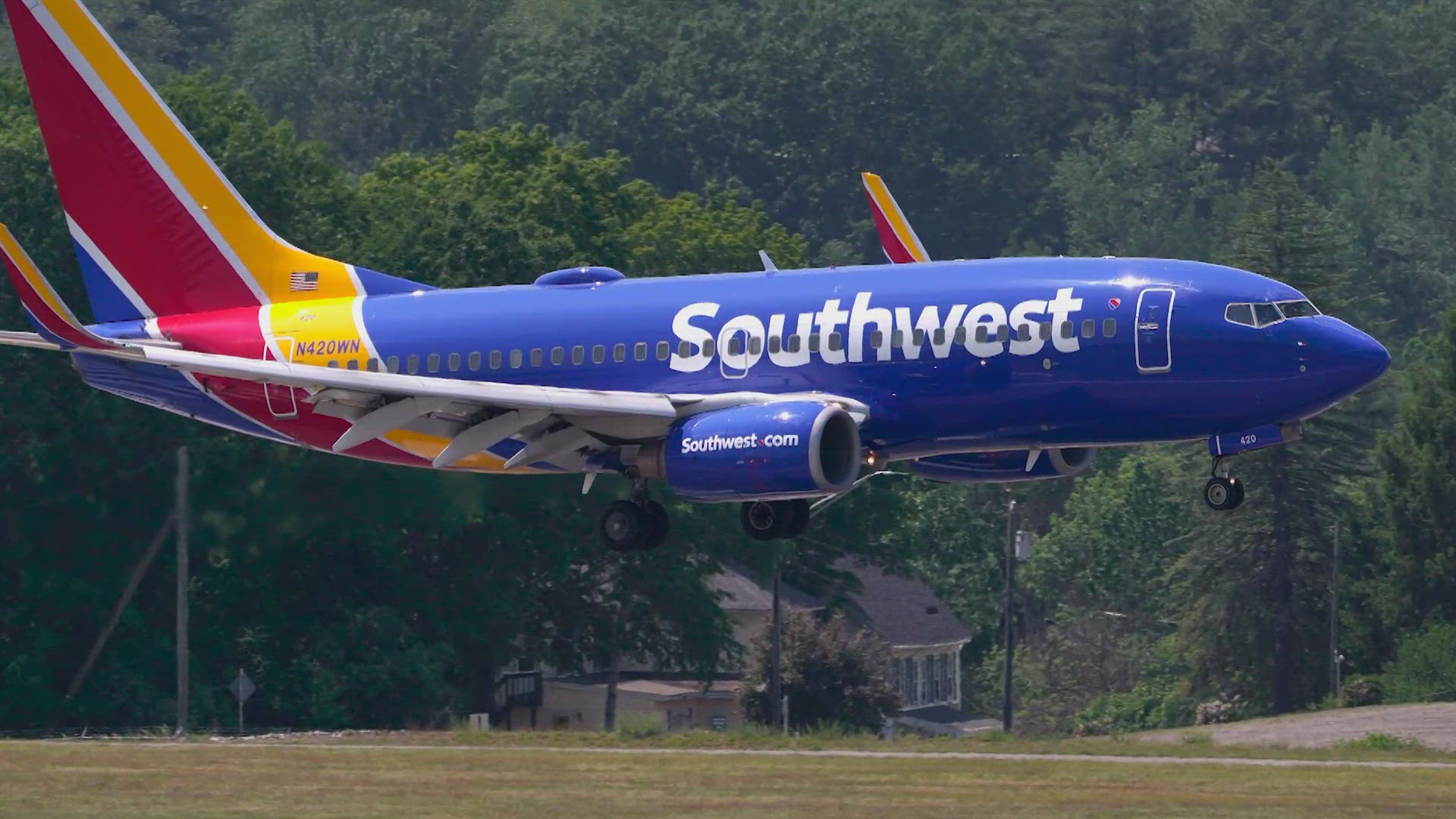DALLAS — Thursday truly marked the end of an era for Southwest Airlines, or at least the beginning of the end.
The Dallas-based airline announced that it will move to assigned seating, leaving behind its longstanding open seating policy that made it unique among the major carriers. Southwest officials in a press release said the move -- which will also include offering premium seating -- was driven by feedback: 80% of customers prefer an assigned seat, the airline said, and when Southwest loses a customer to a competitor, open seating has been cited as the No. 1 reason why.
Southwest doesn't yet have a timetable for when the assigned seating will be rolled out, but it will include all flights.
Whether Southwest's open seating was beloved by customers or ran its course, the policy set the airline apart in the industry. Instead of getting a specific seat assignment when purchasing a plane ticket, Southwest customers simply get the reservation, with no seat attached. At check-in, Southwest customers then get a group position number -- A 33, for example (if they're lucky) -- which tells them where to line up to board the plane. Once on board, customers are free to sit wherever they want.
But as anyone who's flown Southwest can attest, it's a mad dash to check into a flight exactly when the check-in window opens 24 hours before departure. Checking in later puts customers further down the pecking order of boarding numbers, and thus, finding a preferred seat once on board the flight.
Still, the open seating has been a longtime staple of the Southwest flying experience, going back more than 50 years to the 1970s.
"Your reservation confirmed a seat on the plane . . . you just never knew which one," Southwest shared as part of its 50th anniversary celebration in 2021. "Some Hostesses (now called Flight Attendants) would quip, 'It’s open seating. You can sit anywhere you want—just like at church.'"
At the time of Southwest's 50th in 2021, the company called the open seating policy "the ultimate expression of its founding ethos: to make air travel affordable and accessible for everyone."
The open seating was policy was, in particular, a point of pride for Southwest founder Herb Kelleher, the company detailed.
"Even when conventional wisdom suggested the airline could make more money by offering first-class tickets, Herb let his values and passion for fairness drive business decisions," Southwest officials wrote for the company's 50th anniversary. “'Conventional wisdom put a hell of a lot of airlines out of business,' he said."
Southwest officials had said that the open seating policy allowed them to board customers "more quickly and efficiently than its competitors."
"Faster boarding meant more on-time departures, and cost savings that led to lower ticket prices," Southwest officials wrote.
Before this recent round of changes, Southwest had tested the idea of assigned seating in 2006 on 200 flights out of San Diego, and then again in San Antonio. At the time, Southwest CEO Gary Kelly said customers gave clear feedback: They preferred open seating.
Also, Southwest's assigned seating tests upped boarding times by 1-4 minutes, the company said.
The most significant change Southwest made to the open seating process -- before Thursday's announcement -- came in 2007, when they moved away from the first-come, first-serve boarding at the gate. Southwest instead shifted to the model assigning a boarding position letter-number to each customer's boarding pass.
And that's the model that's still in effect today, but apparently for only a limited time.

